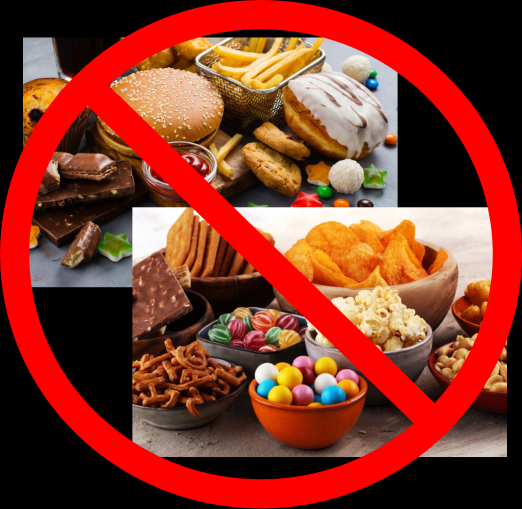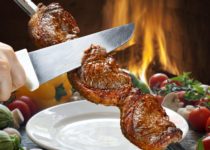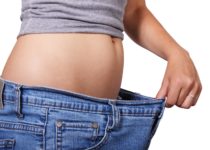Tips for Reducing Carbs in Your Diet
A low-carb diet means reducing carbs in your diet to 150 grams or less a day. What does that look like day-to-day? Here are some tips for low-carb eating.
Reducing Carbs by Cutting out All Sugar, Starch, Artificial, and Low-fat Foods
Some people find this the easiest approach to reducing carbs. You do not have to worry about counting grams of carbs if all of your carb sources are naturally low-carb. You will cut out sweeteners, grains, legumes, starchy vegetables, most fruit, and anything made from those ingredients.

Sweeteners to cut out
- Sugar
- Honey
- Stevia
- Molasses
- Fruit (berries are OK to eat in moderation)
- Fruit juices
Starches to cut out
- Cereal grains – Wheat, Rye, Barley, Corn (maize), Oats, Rice, Sorghum
- Pseudo grains – Amaranth, Buckwheat, Quinoa, Millet
- Starches – cornstarch, tapioca starch, arrowroot powder, etc.
- Starchy vegetables – potatoes of all kinds, parsnips and rutabagas, winter squashes (acorn, butternut, pumpkin)
- Beans, peas, legumes, pulses, dal, peanuts, peanut butter
Artificial “foods” to avoid
- Artificial sweeteners
- Margarine
- Non-dairy creamer
- Processed cheese food – packaged cheese slices are rarely real cheese, cheese in jars is almost certainly processed cheese food
- Potato products – chips and crisps that are only partially potatoes but use wheat and other ingredients as fillers
- Imitation vanilla and other such flavorings
Low-fat Foods to avoid
Low-carb diets are also high fat diets. Low-fat foods often replace fat with sugars and other additives.
- 2% milk
- Skim milk
- Low-fat salad dressings
- Low-fat butter (I don’t know how they do this, but it exists)
- Low-fat mayonnaise
- Anything else that says low-fat on the label
Avoid these things made from sweeteners, starches, and fruit
-
- Candy
- Sport bars, granola bars
- Sport drinks
- Bakery goods of all kinds – bread, rolls, cakes, pies, cookies, doughnuts
- All breakfast cereals
- Many, if not most, packaged foods
- Potato chips, corn chips, etc.
- Many canned foods contain sugar, especially the low-sodium ones; watch the labels
- Ice Cream and other frozen desserts
Reducing Carbs by Tracking and Learning Portion Sizes
If you cannot bring yourself to get rid of all these foods all at once, and most people don’t, become aware of how much of them you eat and reduce amounts. Keep reducing carbs over time until you are eating the right amount of carbohydrates for your health goals. Many people, even on Keto and Carnivore diets, still use a bit of sugar in their coffee or use a bit of cornstarch to thicken a sauce.
If you take the approach of gradually reducing carbs, you have to keep track of what you are eating to be sure you do not get too many carbs in the day, especially if you are going for the very low-carb diets such as Keto and Carnivore.
Learn what a normal portion size looks like
In many US eating establishments, portions sizes are about double a normal portion size.
- A normal low carb serving of potato is 3 ounces; 8 ounces of potato is about the size of a woman’s fist (many restaurants serve 16 ounce baked potatoes)
- A 4 ounce portion of meat or fish is about the size of a woman’s palm or a deck of cards
- 12 or so of those mini creamer tubs is about the size of one cup of non-starchy vegetables
- 6 of those mini creamer tubs is about the size of 1/2 cup of rice or starchy vegetables
- A normal portion of fruit juice is 4 ounces (1/2 cup), about the amount of wine in a small wine glass (typically a 6 ounce glass filled 2/3 full)
Reduce portion sizes and add fats for more satisfying, longer lasting meals
- When eating out, request child sized portions or pick meals off the senior menu
- Order from the gluten-free menu (often lower in carbs, and gluten causes problems for a lot of people)
- Use butter, sour cream, or flavored mayonnaise on your vegetables to get more fat
- Add some avocado or olives to your meal
- Do not order or serve your own dessert, but ask a friend or family member for a bite of theirs
- If there is cake at work, cut off a small piece (one or two bites) to put on your plate and don’t go back for more
- At an ice cream shop, get the smallest possible portion in a cup – east slowly and really enjoy it
- Instead of a doughnut, get a doughnut hole – nibble slowly and really enjoy it
- For easier portion control, when making potatoes at home, look for the little round potatoes at the store instead of the big russets
- Have a salad or coleslaw or a cup of soup instead of french fries, potatoes, potato salad, macaroni salad, chips, or crisps
- Use fatty dressings on your salad (vinaigrette, blue cheese, ranch) and avoid sweet dressings (french, 1000 island, poppy seed)
- Fruit is a better choice of sweet treat than cake, pie, ice cream, or candy
- No fruit juices – it is just liquid sugar; eat the whole fruit instead
- Switch from drinks made with sugar to drinks made with artificial sweeteners (better to not have sweet drinks at all, but at least your carb load is greatly reduced)
- Use heavy cream (at least half and half) in your coffee instead of sugar and other creamers
- If you are making cookies, cut the recipe in half or even 1/4 so there are fewer cookies to tempt you
- For any baked goods, make them small
Quality of Carbs
While total carbs are important, you also should care about the quality of the carbs you eat. Unless you are trying the Carnivore Diet (as close to zero carbs as possible), you will be eating some carbs each day. You could be on a low-carb diet and fill your 150 grams with fruit juice smoothies, eating nothing else but meat and fat that day. You will not get very much fruit juice smoothie, but you would in fact be eating low-carb.
Let’s say you have one small orange banana smoothie with 8 oz orange juice (50 grams of carbs), one medium banana (25 grams of carbs), a few drops of vanilla (no carbs), and blended with some ice cubes. That is already half your carbs for the day on a regular low-carb diet and far more carbs than you are allowed on Keto (under 50 grams of carbs a day). Have two of those in the day and the only other things you can eat are meat, fish, eggs, and fat (butter, mayonnaise, oils).
But there is even more bad news. The point of low-carb diets is to normalize your blood sugar, keeping insulin low, and turning on your fat burning mechanisms. That is how low-carb diets work to make you lose fat (and weight). If you do choose to use sugar and other high-glycemic foods for your carbs, you will quickly raise your blood sugar, causing an insulin spike, followed by a blood sugar crash leaving you feeling sick and craving more carbs. And your body will not change over to fat burning. This is exactly what we are trying to avoid with low-carb! You get the worst of all worlds with this kind of approach to low-carb.
Shop the Edges of the Store
You have heard this before, but it is still true: most of your purchases should be from the edges of the store where the fresh food is displayed. Focus on the produce and meat sections of your local grocery. The one edge of the store you want to avoid is the bakery.
Of course you will buy things from the middle of the store – paper products, personal care items, cleaning products.
Watch out for condiments and spices. Sugars of various kinds and flours of various kinds turn up in quite a number of these products. Unless you make your own condiments, or get them from a high quality source (such as my shop on this site), you will end up with some additional carbs from salad dressing, cooking sauces, mayonnaise, and some spice blends. In general, the low-fat products are higher in carbs. You want the fat and not the carbs, so avoid low-fat condiments.
Common Substitutions for Reducing Carbs
- In place of bread or tortillas – lettuce leaves, melted crisp cheese rounds
- In place of noodles – spiral cut zucchini
- In place of mashed potatoes – cauliflower
- In place of baguette slices with toppings – put the toppings on cucumber slices
- Instead of high carb snacks – nuts and seeds, jerky, kale chips
- In place of lasagna noodles – zucchini slices, eggplant slices, or cabbage leaves
- In place of pizza crust – make mini pizzas on eggplant slices or large mushroom caps, make a crust from almond flour, make a crust from mashed cauliflower, make a meat crust and put your other toppings on that
- Instead of milk chocolate – 75-90% dark chocolate
- Instead of a whole candy bar – one small perfect chocolate truffle
- Instead of frosting – softened cream cheese
Typical Low-Carb Days for Me early 2018
I generally eat 2 meals a day. I drink water, decaf black iced tea, and decaf black hot tea. I start my day being sure to get plenty of fat.
For macro-nutrients, I try to stay at 50 grams of protein a day (sometimes a bit more), I typically have much less than 50 grams of carbohydrates a day (ketogenic diet). I make up the rest of my calories with fat. If I’m hungry, I eat more by adding snacks of full-fat dairy or high-fat nuts.
Day 1
Breakfast: 2 deviled eggs, handful asparagus spears, steamed and topped with 1 Tablespoon Primal Kitchen chipotle lime mayonnaise (yes that is an affiliate link)
Snack: 1 ounce macadamia nuts
Dinner: 4 oz hamburger with cheddar cheese, slice of raw onion, 1 Tablespoon flavored mayonnaise, wrapped in lettuce leaves; mixed greens salad with chopped 1/2 avocado, 1/4 cup bamboo shoots, handful of raspberries, grated asiago cheese, and Primal Kitchen Caesar salad dressing (this is also an affiliate link).
Late evening: 8 oz glass of really good red wine.
Day 2
Breakfast: Omelette with 2 eggs, 1 ounce carnitas pork, 2 Tablespoon chopped Ortega chili, 2 Tablespoon cheddar cheese, 2 Tablespoon sour cream. 2 Tablespoons salsa; 1 cup chopped steamed vegetables with 1 Tablespoon butter.
Dinner: 4 oz pork chop braised with white wine and chicken broth, finished with lime juice and marjoram; 1 cup steamed broccoli with 1 Tablespoon butter; 1/2 cup chopped, steamed carrots with butter and a bit of brown sugar and ginger.
Late evening: 8 oz glass of really good red wine.
Typical Low-Carb Days for Me fall 2018
Due to household schedules, I switched to 3 smaller meals a day. I also slightly increased my protein because I felt I was getting too little. I drink water, decaf black iced tea, and decaf black hot tea. I start my day being sure to get plenty of fat.
For macro-nutrients, I try to stay at 70 grams of protein a day (sometimes a bit more), I typically have much less than 50 grams of carbohydrates a day (ketogenic diet). I make up the rest of my calories with fat. If I’m hungry, I eat more by adding snacks of full-fat dairy or high-fat nuts.
Day 1
Breakfast: 1/4 of Spinach Mushroom Crust-less Quiche.
Lunch: Salad with 2 cups romaine lettuce, some basil leaves, handful of chopped mixed veggies (broccoli, cauliflower, carrots), 1 oz chopped ham, 1 oz grated cheddar, handful of alfalfa sprouts, a couple of tablespoons of salad dressing.
Snack: 1/4 cup heavy cream
Dinner: 4 oz Braised Lemon Pork Chops, 1/4 bunch fresh asparagus (blanched), small Fresh Caprese Salad with one slice of tomato and one slice of mozzarella.
Late evening: 8 oz glass of really good red wine.
Day 2
Breakfast: 2 slices Canadian bacon (about 1 ounce) and Deviled Eggs
Lunch: Lettuce wrap sandwich with 2 ounces roasted turkey breast, a slice of tomato, a handful of alfalfa sprouts, and 1 Tablespoon Primal Kitchen chipotle lime mayonnaise (yes that is an affiliate link).
Snack: 1/4 cup heavy cream
Dinner: 1 serving of Paleo Gluten Free Lasagna with Cabbage Leaves, some summer squash sauteed in butter with some sweet onion
Late evening: 8 oz glass of really good red wine.









